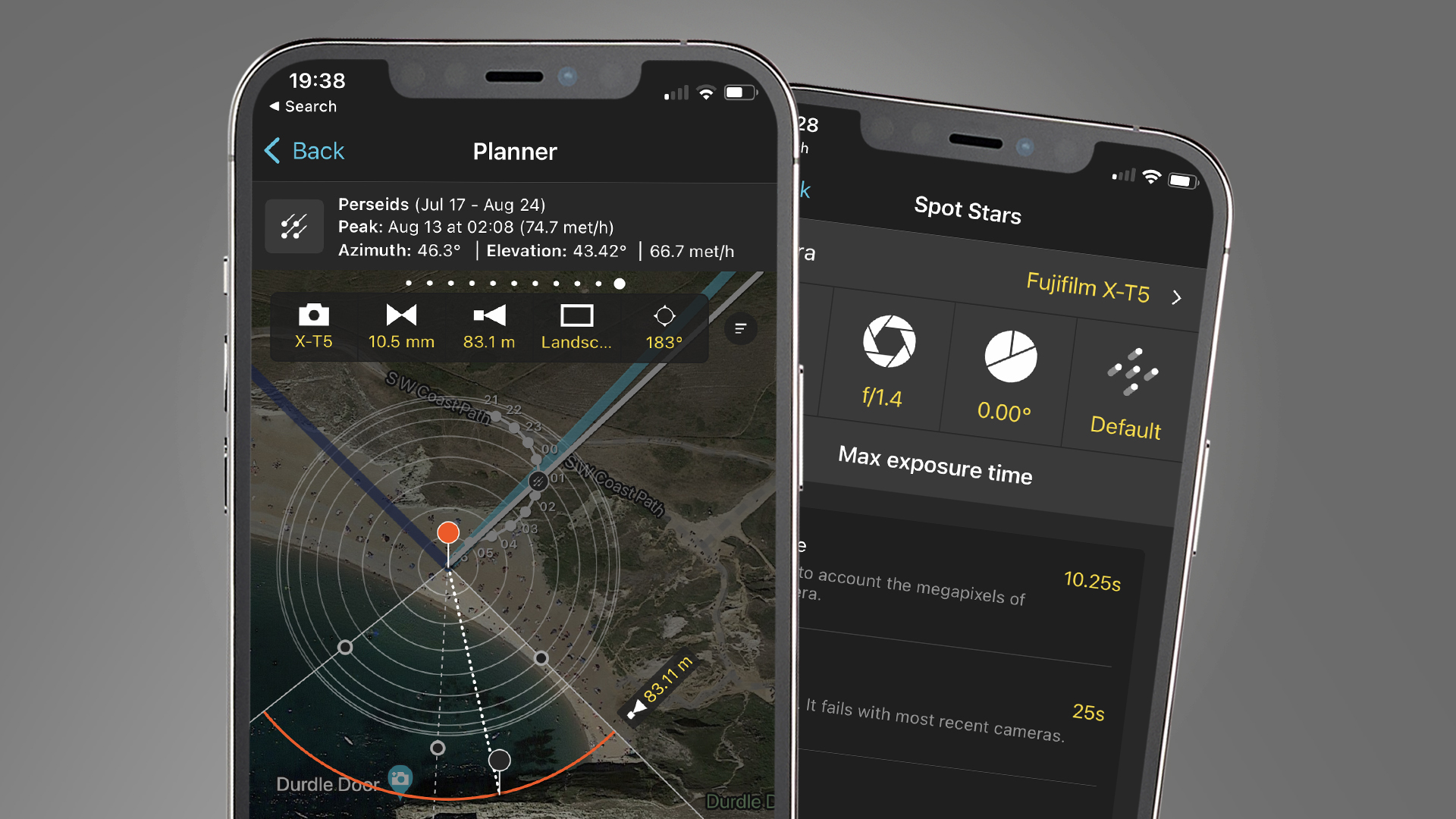
The Perseid meteor shower is one of the most impressive displays of shooting stars you'll see throughout the year – and it's peaking this weekend on August 12 and 13 in the US and UK.
The display of shooting stars, caused by Earth moving into the path of debris left by the Comet Swift-Tuttle, has been going since mid-July, but traditionally peaks on this weekend every year – and that looks likely to be the case again.
That's because the Earth is moving into the most intense part of the comet's stream and ice and rock, which should produce an impressive light show for stargazers and photographers (weather permitting, of course).
Even better, the Perseids should give us a particularly good display this year, because they coincide with a waning gibbous moon – which means blacker skies and far less light pollution for the shooting stars to contend with.
Whether you're looking to watch, photograph or livestream the celestial event, here's everything you need to know about this year's Perseid meteor shower.
When is the Perseid meteor shower?
The Perseid meteor shower is peaking this weekend, with the number of meteors ramping up from August 11 ahead of the main peak between the evening of August 12 and the early morning of August 13. You'll also be able to watch the show (albeit with a lower meteor rate) on the night between August 13 and 14.
The best place to see the meteors is anywhere in the northern hemisphere in a dark location away from light pollution. Wherever you are, aim to head out on the evening of August 12 anywhere between 10.30pm – 4.30am.
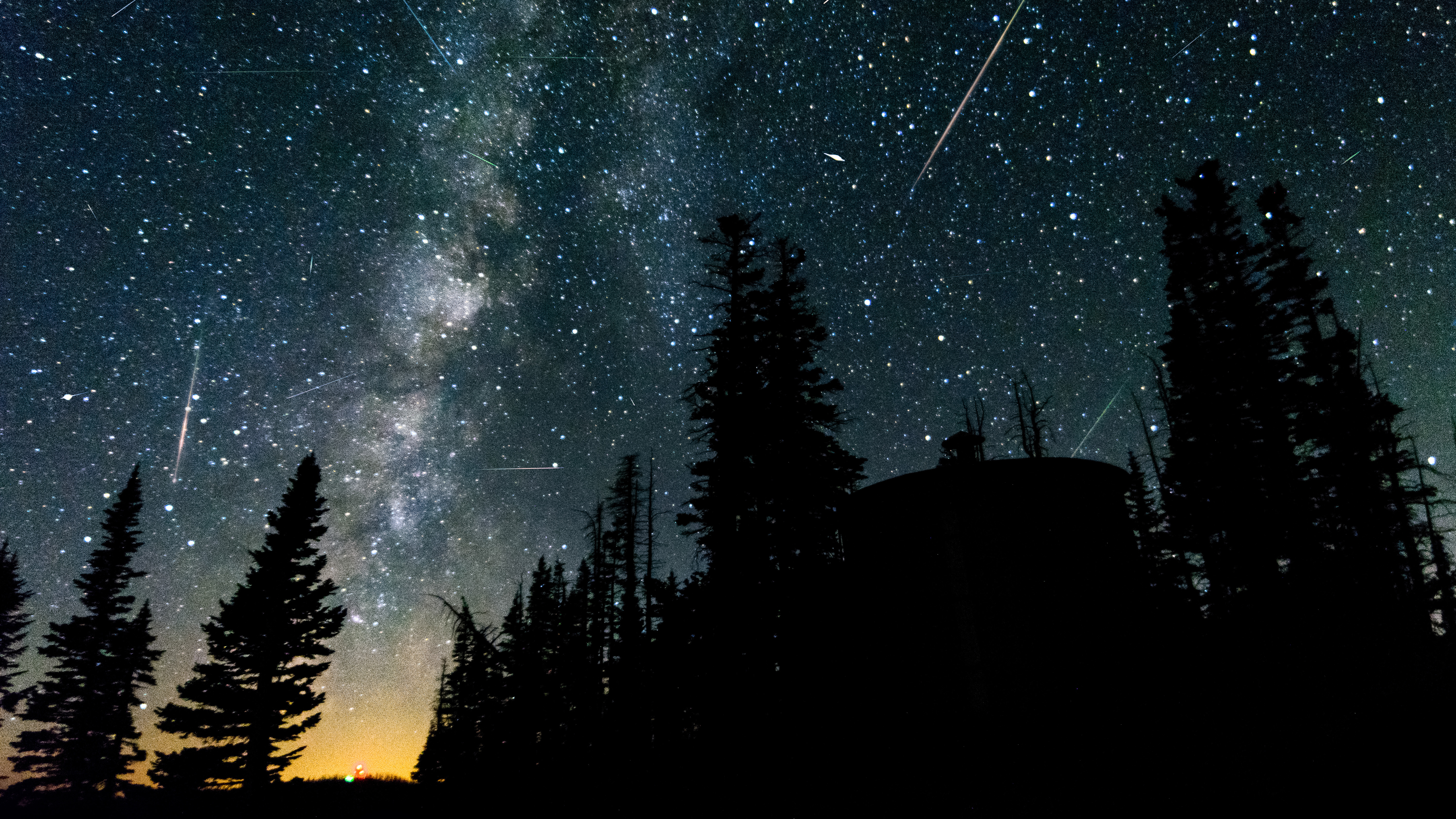
According to the American Meteor Society, the absolute peak will be 4am UTC on August 13 (or 12am EDT / 9pm PDT, on the evening of August 12). But a high amount of meteor activity is expected for around eight hours either side of that peak, which is why you simply need to aim for the darkest part of the night.
According to NASA, you should be able to catch around 40 meteors per hour in most regions, assuming you're away from urban light pollution. That's not quite the 100 meteors per hour rate we've seen previously in some regions, but higher rates are possible – and that still works out at one meteor every couple of minutes, so well worth staying up for.
Why is 2023 a good year for the Perseid meteor shower?
There are a few reasons why 2023 should be a particularly good to watch and photography the Perseid meteor shower. One of the main factors that affects the celestial display's visibility, other than weather, is the moon.
Last year, a bright, full Sturgeon moon coincided with the Perseid's peak, which had a big impact on observation. But in 2023, there'll be a waning crescent moon instead, which means there'll be several hours without any bright moonlight to interfere with your Perseid plans.
This particular meteor shower is also one of the best for northern hemisphere stargazers. Since the shooting stars are more numerous after midnight, the reasonably warm temperatures of August make it much easier to stand outside for long periods than for the next best meteor shower, the Geminids, which peak in mid-December when it's too cold to stay outdoors for long.
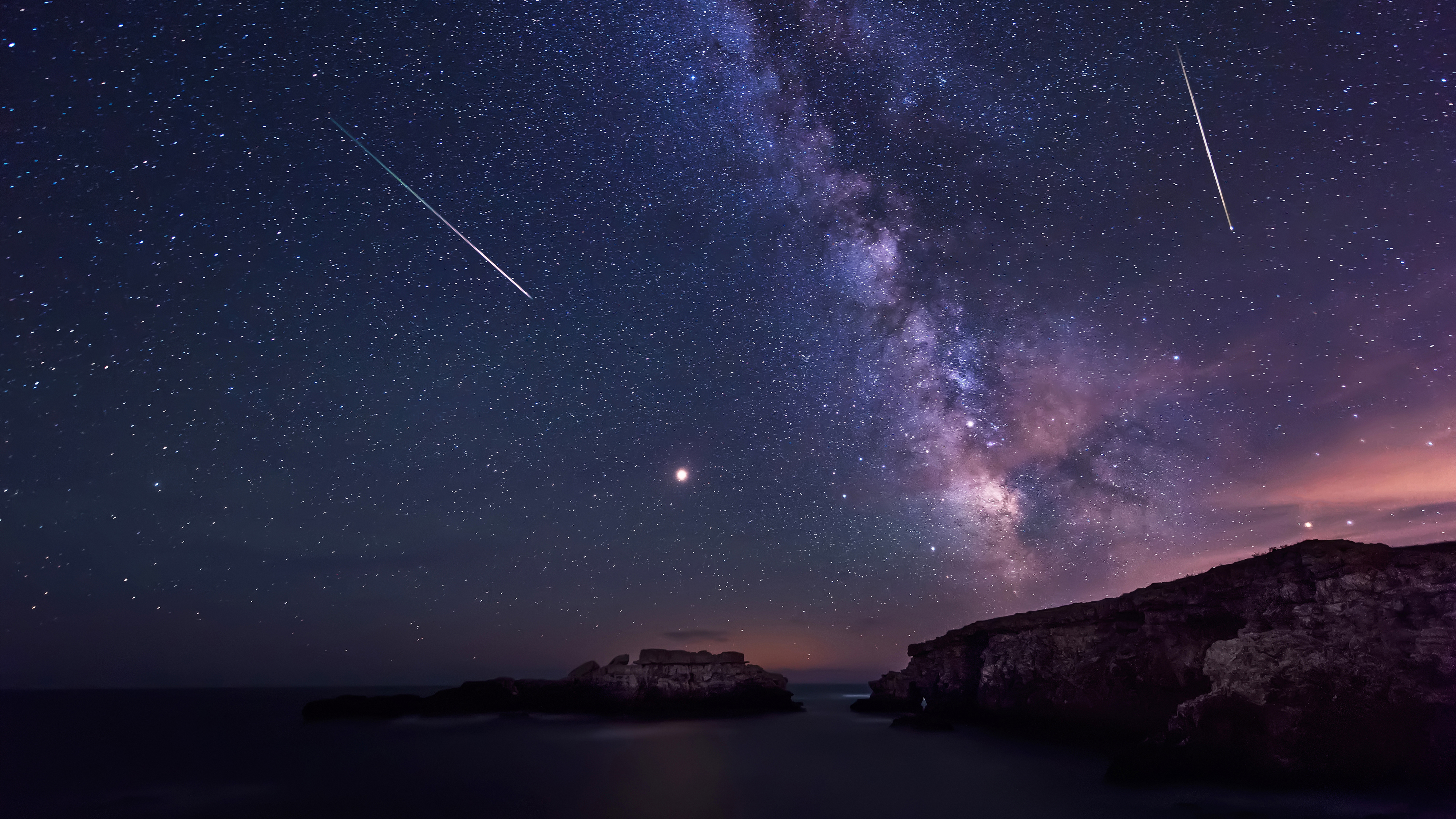
Naturally, the weather could still also affect visibility, so you'll need to check for cloud cover in your location.
Another influencing factor can be wildfires. In 2021, the Pacific Northwest wildfires produced higher than average amounts of cloud and smoke that affected Perseid visibility, with only California, Texas and the East Coast escaping. So it's certainly possible that this year's wildfires in Canada and Maui could have a similar effect in some regions.
Where are the Perseid shooting stars?
To see the Perseids' fireworks you need three things: complete darkness (so find somewhere remote, or turn off all the lights in the back of your house), clear skies, and the patience to look at the sky for about 20 minutes unrewarded.

If you can manage that last one, congratulate yourself for being among the minority of Perseid watchers: you could then be rewarded with up to 100 shooting stars in the next hour.
You could see shooting stars anywhere in the night sky, though as the name suggests they will appear to radiate from the constellation of Perseus – which means you just need to point yourself vaguely to the north or, if you're in southern latitudes, towards the north-eastern sky.
What do I need and what am I looking for?
The Perseids' meteors can show up in any part of the sky, so you'll improve your chances by finding somewhere with a wide view of the horizon – naturally, the fewer buildings and trees that are in the way, the better.
Most of its shooting stars will be visible for just a fraction of a second from the corner of your eyes. But every now and then, you'll also see big, bright, sparkling 'earth-grazer' fireballs that often appear to leave a trail behind them, and should last a full second or so.

A little patience (and a rucksack full of snacks) is advisable though – it can take your eyes at least half an hour to adjust to the night's darkness. Resist the temptation to look at your smartphone or go back inside your house – every time your eyes see white light, your night vision goes back to zero, and you will have to wait another 20 minutes for it to return.
If you're venturing out, a torch with a red light can help preserve your night vision. The USB-rechargeable Petzl Actik or the cheaper AlpKit Gamma III are good choices. Aside from this and a comfortable blanket or sun lounger, though, that's all you really need – avoid a telescope or pair of binoculars, as these will limit your view of the night sky so much that you won't see any shooting stars.
Settle in for a good 2-3 hours, though, and you should be treated to an impressive show – particularly as this year's moon will be in its waxing crescent phase during the peak hours.
How do I find Perseus?
If you're unfamiliar with the night sky at this time of year, there are a plethora of planetarium apps for phones and tablets. Use them sparingly, but apps like Star Walk 2 will help you find you the constellation of Perseus, which is just below the W-shaped constellation of Cassiopeia.
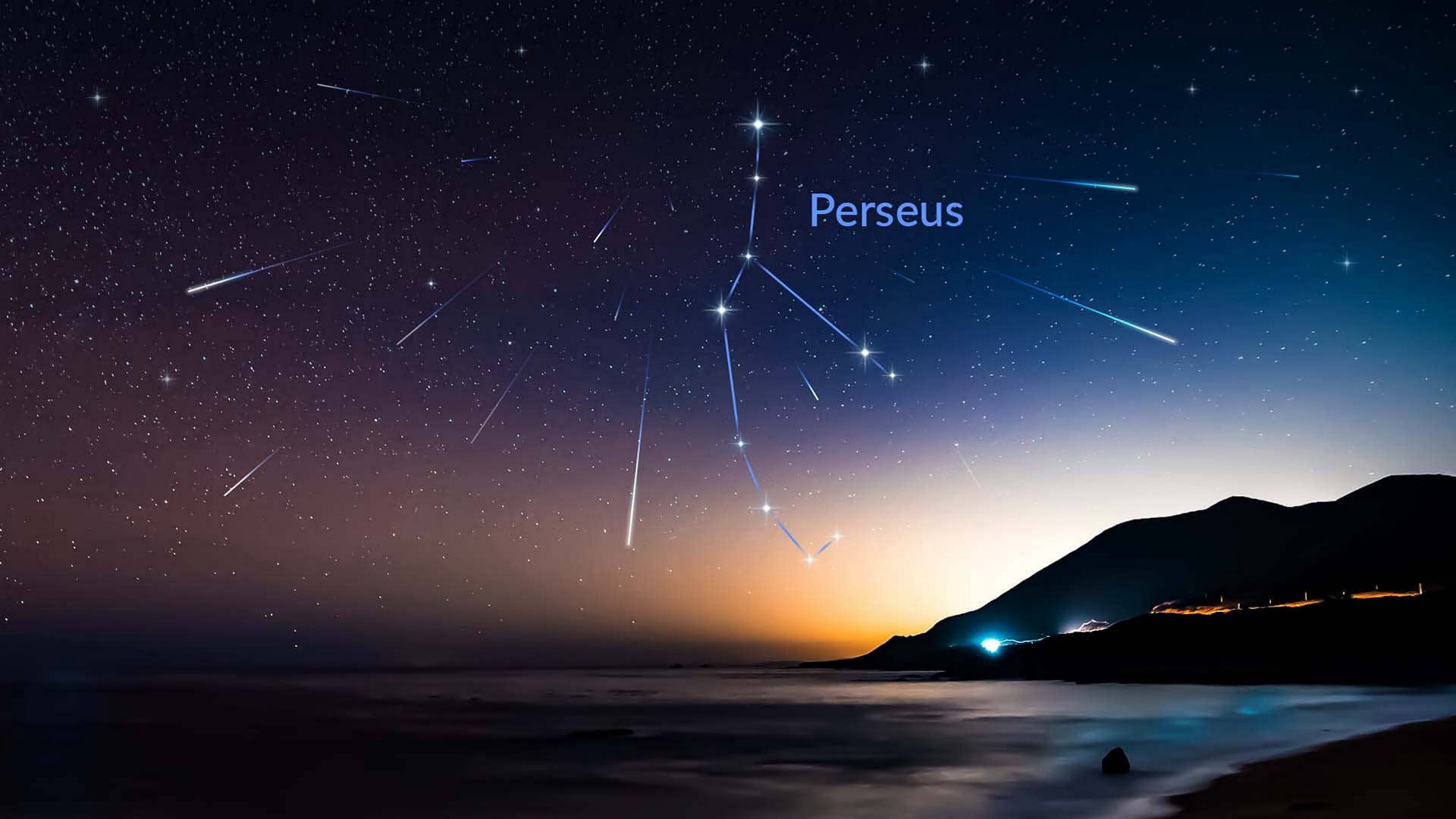
Fix your gaze on this patch of sky, and above, but don't get dogmatic about it: a meteor might just as easily start above your head and whizz south. However, to look low to the southern horizon would be a mistake.
You'll probably notice the massive Summer Triangle nearby in the eastern sky – three very bright stars that sits across the Milky Way. Stay outside long enough looking for meteors and your eyes may get sensitive enough to glimpse this wonderful sight.
Are there any Perseid meteor shower live streams?
If you can't see the Perseids in person, multiple news channels are live-streaming the meteor shower on their websites with raw footage.
The best source with context is likely to be the NASA live stream, and you can also get updates from the NASA Meteor Watch Facebook page and Marshall Space Flight Center X (formerly Twitter) account.
While there aren't quite as many Perseid livestream opportunities on YouTube as there were during the pandemic (when large observatories like the Lowell Observatory in Arizona hosted online viewing sessions), the The Virtual Telescope Project does have an online observation planned for August 13 at 2.30am BST (which works out as 6.30pm PT / 9.30pm EDT on August 12).
How do I photograph the Perseids meteor shower?
There will rarely be better conditions for photographing the Perseids than this week's almost moon-less skies, but there is also a large element of hit-and-hope involved.
Despite huge improvements in smartphone astrophotography modes, their sensors still generally lack sensitivity for shooting meteors. What you need is a DSLR or mirrorless camera (ideally a full-frame model) with manual controls, mounted on a tripod.
The setup
Choosing the right lens and focal length is a bit of a balancing act. Generally speaking, the best astrophotography lenses tend to be pretty wide, in the 14-20mm focal range on a full-frame camera (or around 10-14mm on an APS-C model). On the other hand, Perseid meteor trails can look pretty small and sometimes barely visible when shooting that wide.

As you're unlikely to be buying a new lens just to photograph this meteor shower, we'd recommend grabbing whichever lens you have that's closest to the 28-50mm range (or 17-32mm on APS-C cameras).
The Perseid meteors can appear pretty much anywhere in the sky, so it's best to find some foreground interest for your shot – like a tree or, even better, a decommissioned antenna like the ones at The Mullard Radio Astronomy Observatory in the UK (above).
The settings
Switch your lens to manual focus and set the focus to infinity – or point it at a bright star and manually focus on it. Set your ISO to 800 and your aperture to f/2.8, and take some long-exposure shots over 20-30 seconds. You'll need to either use your camera's self-timer or a remote shutter to avoid camera-shake and blur.
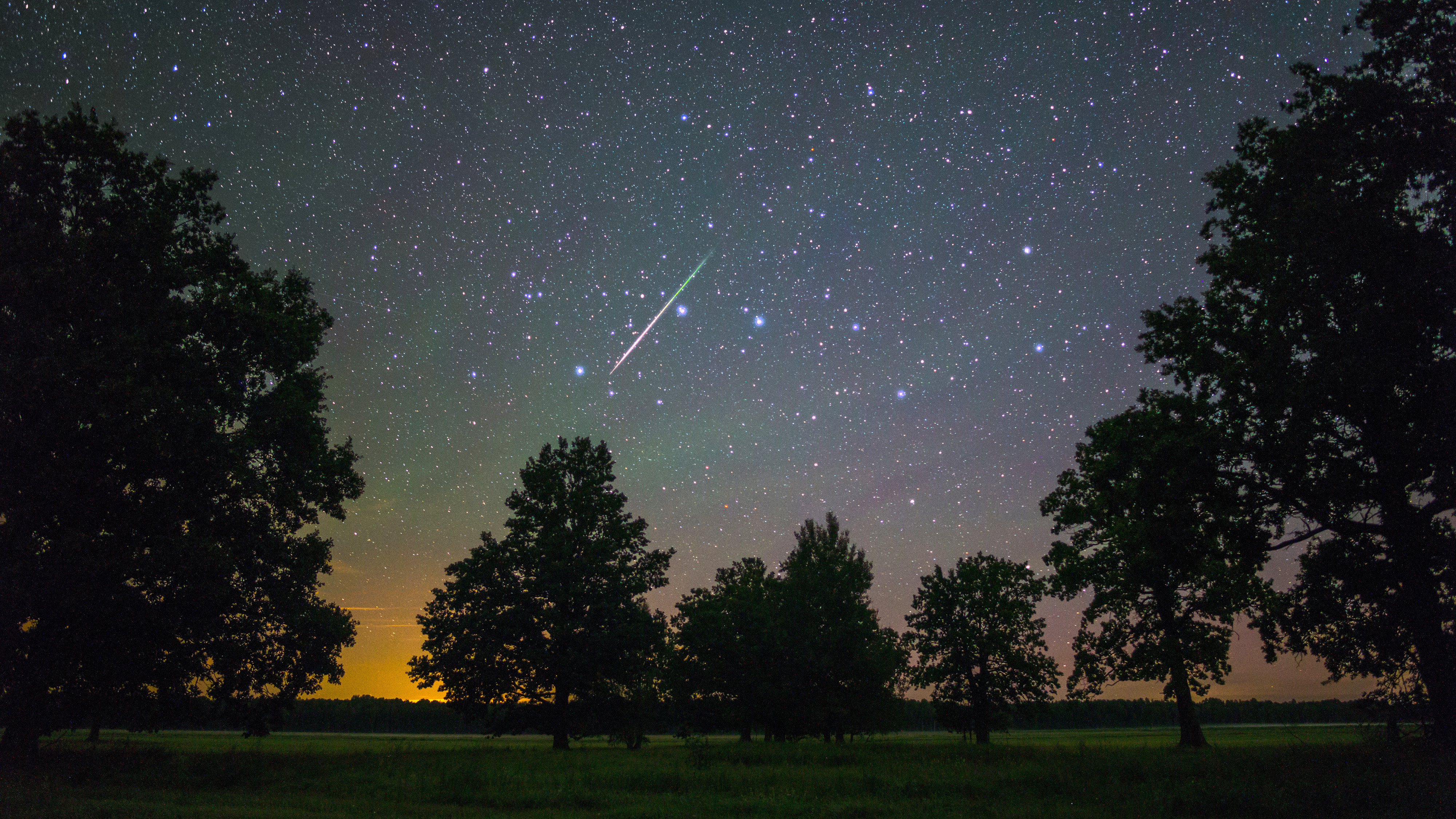
Check your test shots to make sure they're sharp and correctly exposed, making any tweaks if needed. Another option is to use your camera's built-in interval timer to shoot a timelapse, taking about 100 or more 3o-second exposures one after the other. You can then use the likes of Photoshop or StarStaX (on Mac) to create a star-trail, which will (hopefully) have shooting stars all over the image.







